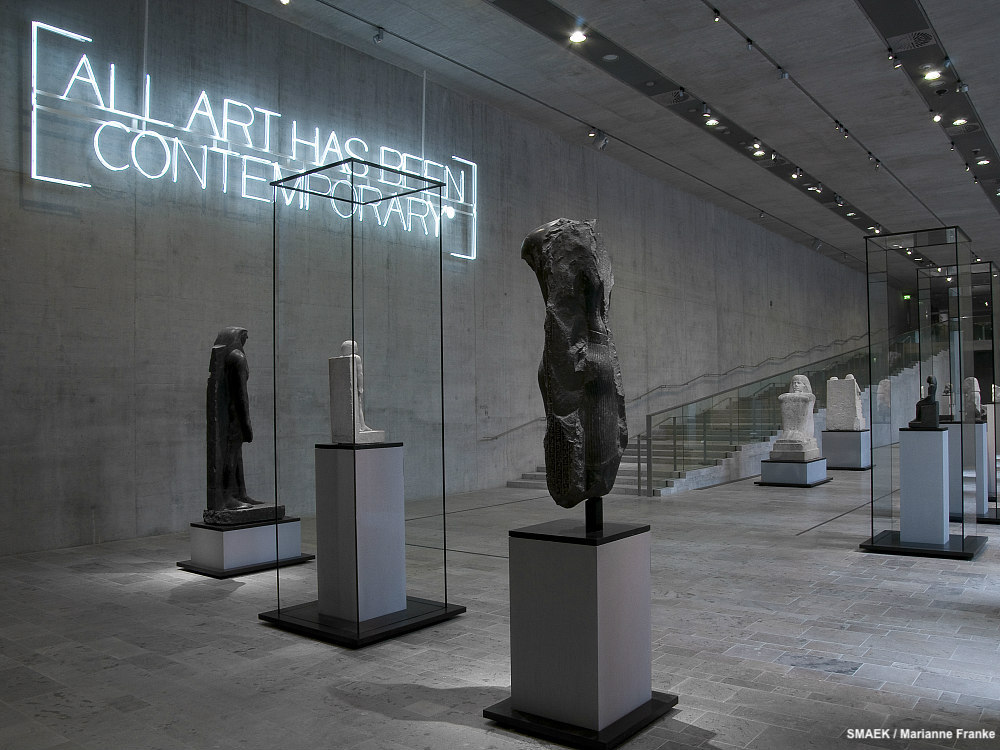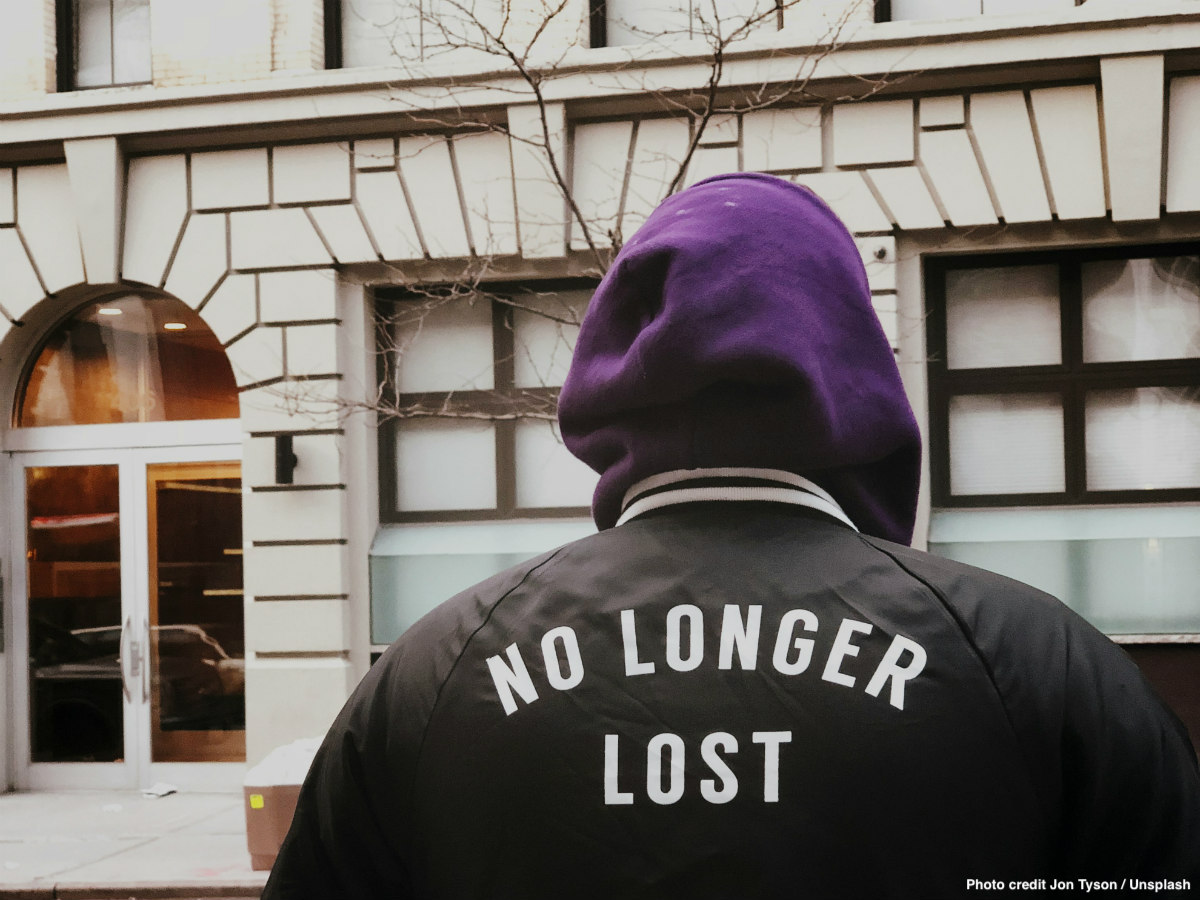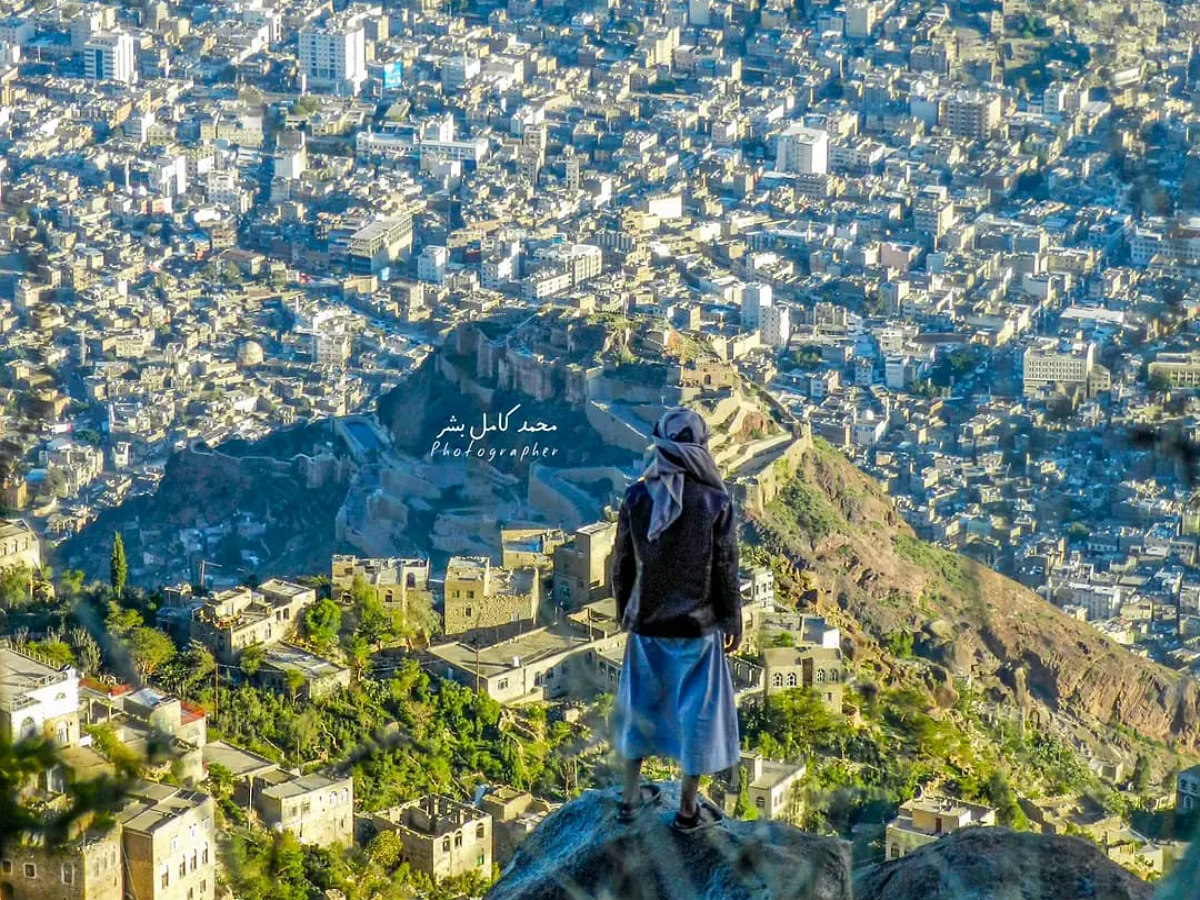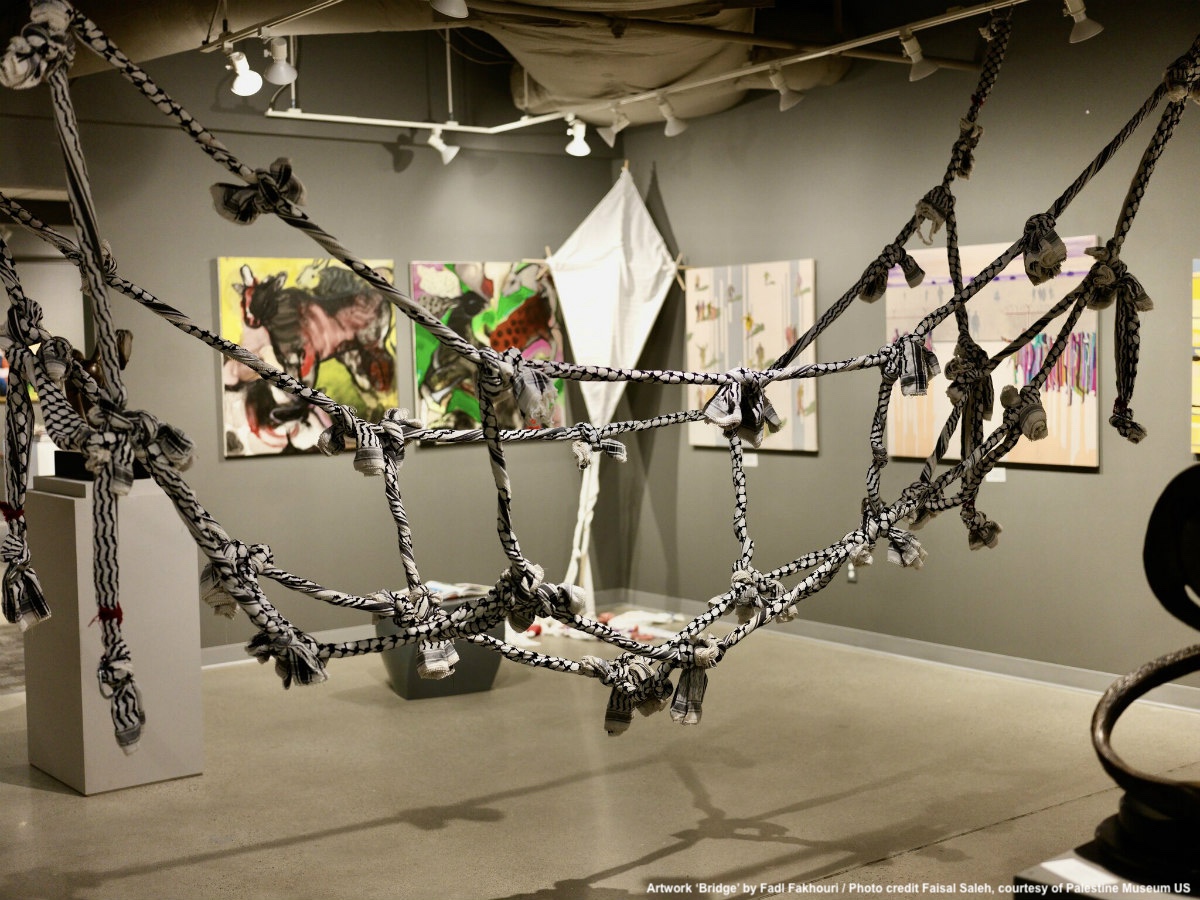“All Art Has Been Contemporary” — it is the catchphrase of the Museum of Egyptian Art in Munich displayed in an airy main space during the last eight years when it poured out its new progressive spirit for the public. The museum is part of the city’s vision for the ‘Kunstareal’ – an area in the middle of the lively Maxvorstadt district offering a variety of museums – where the visitor encounters a combination of art, culture and knowledge, indoors and in public space.
Nearby is the square Königsplatz, redesigned under the National Socialist rulers as Nazi propaganda and part of a master plan to transform Munich into the ‘Stadt der Bewegung’ (‘Capital of the Movement’). The Americans bombed most of the remains of Königsplatz and brought the removed greenery back. However, images of mass rallies of National Socialist soldiers at this square, and a book burning, are well-known episodes to Munich residents.
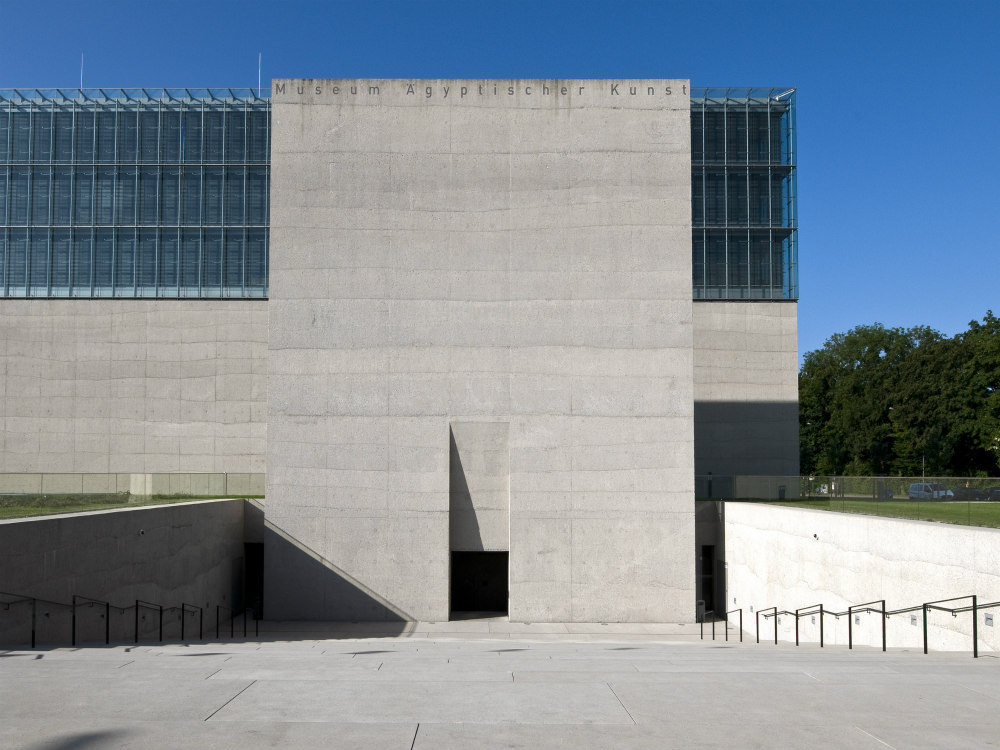
What few people in Munich know is that on the premises where the new Museum of Egyptian Art (SMAEK) and the Film School stand today, a monumental building for the administration of the Nazi Party (NSDAP) was planned – as an extension of two still existing symetric buildings at crossing roads. One is at the eastern end of the street Arcistrasse, the Führerbau was erected north of Brienner Strasse and, symmetrically to the south, the NSDAP administration building, nowadays Haus der Kulturinstitute and The School of Music and Theater respectively.
This area here has a very intense history, said Sylvia Schoske, the former director of the SMAEK, when we met for an interview at the museum. With regards to the history of the Third Reich this is here contaminated soil.
Although the huge administration building, planned under the architect Ludwig Troost, never rose up from the ground due to the start of the Second World War, the underground bunkers were finished. They were only removed when the SMAEK was built around fourteen years ago. “Back then in the sixties, when the Technical University was first built here, they shied away from taking out these rotten roots from the ground, everything was covered up,” revealed Schoske.
The masoleonic task of removing the four meter thick walls of the bunkers gave way to the exhibition rooms of the SMAEK. Visitors access the museum by going down stairs outside to reach the main entrance in the underground, a relatively small door built on a generous wall — something that chimes in well with the access to a burial chamber.
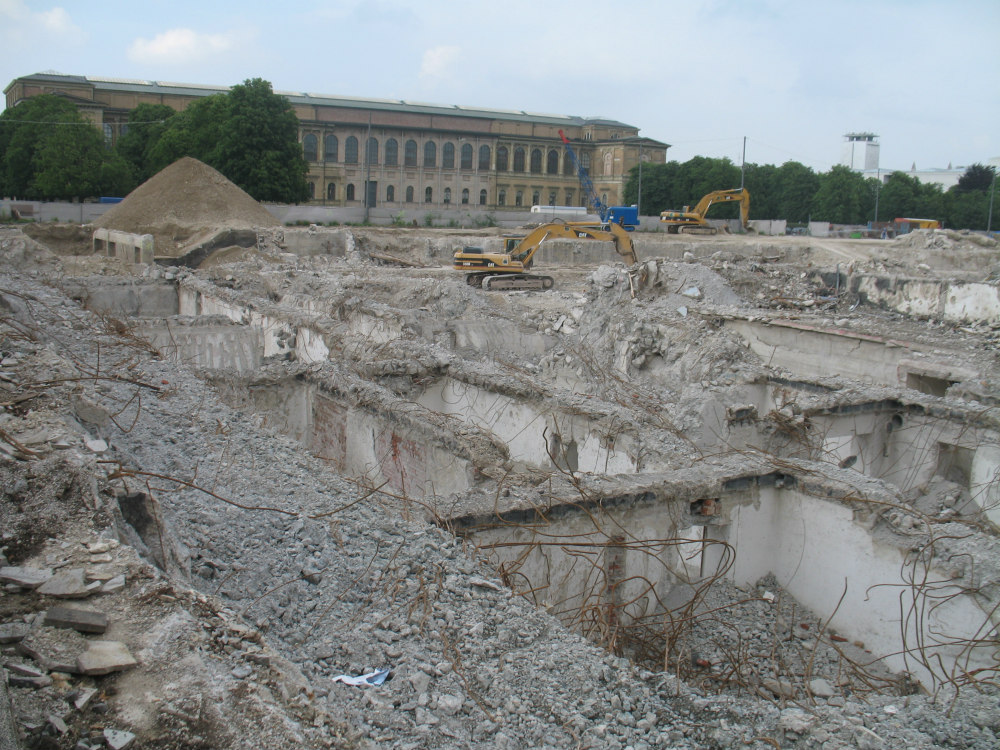
Once the museum opened in June 2013 it became clear that the history of the museum grounds was hardly known to any of the visitors. Schoske articulated some of the complications to be responsive to the emotional, social, political, and religious world around them while revealing the Nazi legacy to keep the social agency of the museum towards the public. Dealing with the past in public spaces is controversial. Some argue that this difficult memory should be left altogether to decay, while others call for these particular sites to be preserved as a ‘warning from history’, although this could play into the hands of neo-Nazis.
As difficult as it was, the museum’s team knew it couldn’t remain untold. In 2019 a call from the Munich Stolpersteine initiative e.V surprised them with a proposal to lay in Stolpersteine (literally “stumbling stone”, metaphorically a “stumbling block”) on the museum grounds. Stolpersteine are concrete cubes bearing a brass plate inscribed with the names and date records of the lives of the victims of Nazi extermination or persecution in front of their last place of residency—commonly seen in Berlin, other German cities and abroad.
Although it is actually obvious, we haven’t thought that the construction of the headquarters of the NSDAP was in the wake of the demolition of residential buildings expropriated from their owners who could have been deported, explained Schoske.
Research confirmed that Jewish citizens were forcibly evacuated from their houses located where the museum stands today, some of them deported to concentration camps later. The museum’s immediate response to accept this form of remembrance was a kind of activism which ignited controversial reactions in the city. The government of Munich has always had second thoughts about the stumbling blocks pioneered by artist Gunter Demnig. Actually the city rejects them in public spaces, however three of them were laid in front of the SMAEK on its grounds and three inside the museum in October 2020.
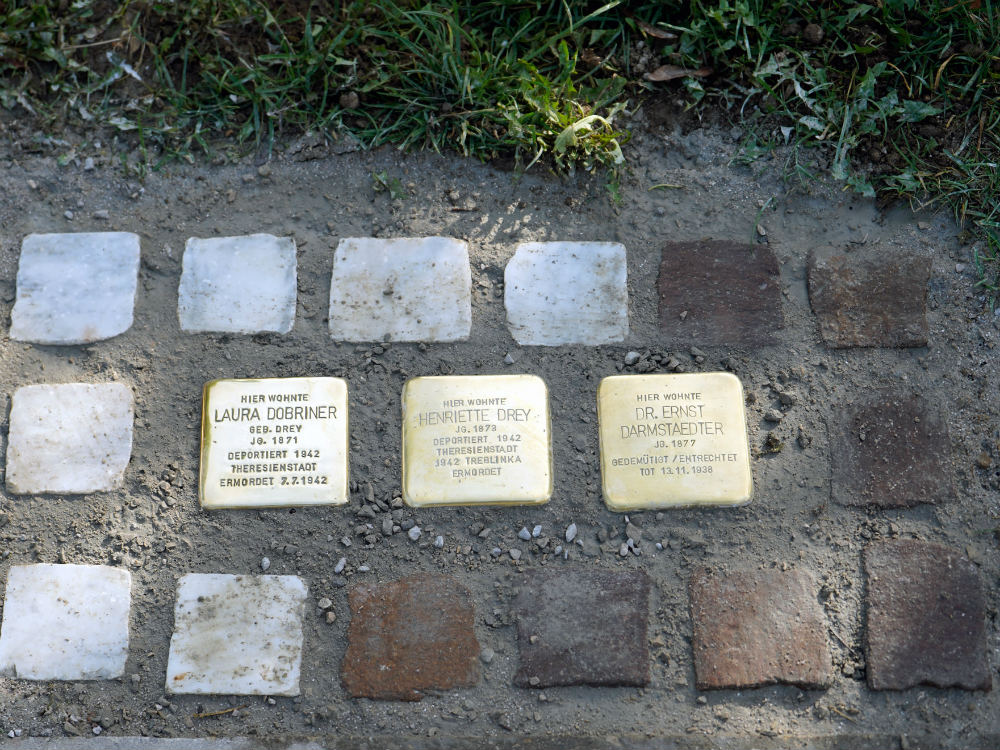
Schoske argues that the Egyptians themselves did a lot to be remembered, in other words, to become immortal. For example, it was very important that the name won’t be forgotten. When bypassers slightly lean towards the stumbling block to read its text, then they are doing exactly that, keeping the memory of these persons alive. “But we also bow,” pointed out Schoske. “This gesture is, in most cultures, a tribute; one bows in memory of the deceased.”
In Munich stumbling blocks can only be found on private grounds thanks to the building owner’s permission. For years, there has been a cloud hanging over this form of remembrance in Munich as to whether it is appropriate – or whether to use steles and blackboards with their names not embedded in the ground where nobody can step on it. Schoske and her team’s determination to engage the museum in a decision of activist nature, against the city government’s stance over remembrance, was a confident extension of the museum’s principles.
Lots of positive mails and letters from everywhere reached Schoske showing support for the museum’s activism, wary of jeopardising funding sources. Somebody from Toronto wrote: “I am the son of a German Jew who was forced to flee his homeland as a 14-year-old boy in 1934. His older brother and younger sister were also able to escape, however their mother, and another 15 or so members of our family were Holocaust victims. (…) I applaud your courage and determination, in the face of rising anti-Semitism, to allow Stolpersteine to be placed at your fine museum.”
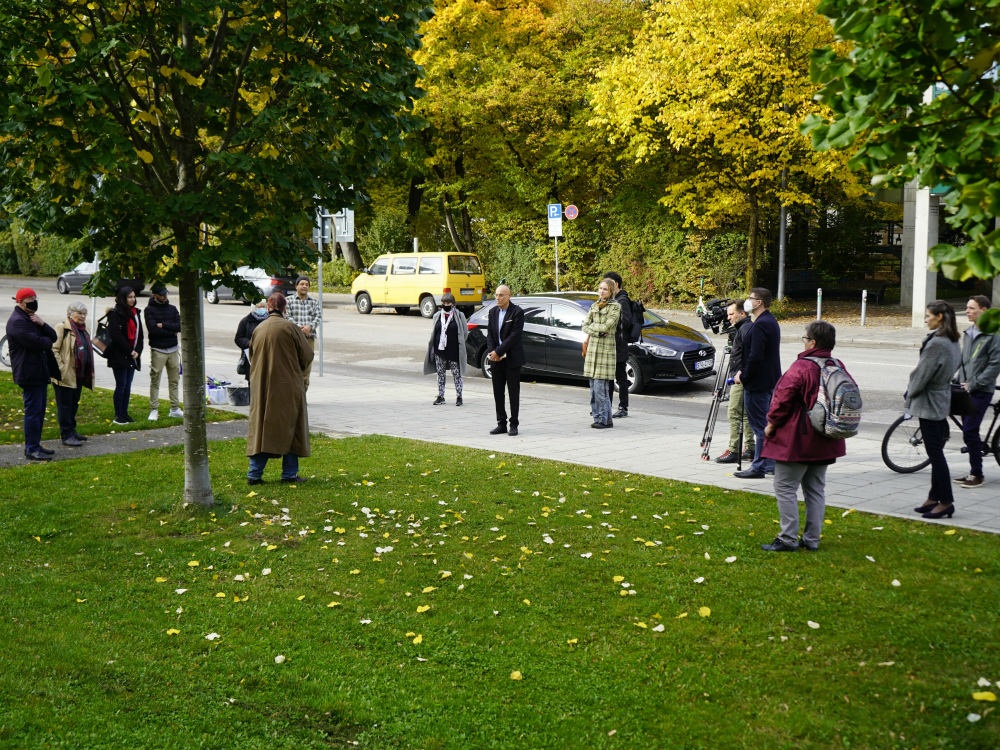
As an Egyptologist, explained Schoske, our job requires dealing with culture memory and remembrance. The ancient Egyptians believed that a person continues to live as long as her/his name is spoken and remembered. Thus they provided statues and columns with their names and titles, and buried with the most diverse everyday life objects. When we decipher these texts and explain them at lectures and guided tours, then we do exactly what the Egyptians hoped and wished for. “It is a very crazy thing. We carry on preserving their memory, something that has worked out for thousands of years.”
But the Nazis took everything: furniture, artwork, dailylife objects, family members. Here, between the streets of Gabelsbergerstrasse and Arcisstrasse, the memory of former neighbours was wiped out. The Nazis expropiated their residential buildings – many never got any compensation – and afterwards demolished them. Here used to live neighbours with diverse backgrounds, from a hat manufacturer, Fritz Heinrich, with his wife Rosa Kroglich, to a chemist Dr. phil. Ernst Darmstaedter with a doctorate in chemistry from Heidelberg University. They were all neighbours in the Arcisstrasse 28.
We know of two houses, number 28 and 32, which were on the museum grounds. As early as 1934, this entire area was expropriated and the residents evicted, explained Roxane Bicker, head of education at the museum.
The former house at Arcisstrasse 32 belonged to Laura Drey, who was married to Dobriner, and lived there with their children Georg Hermann and Konrad as well as with her sister Henriette Drey. Konrad had become an important endocrinologist with a doctorate in medicine from Munich’s Ludwig Maximilians University in 1933. One year later he managed to immigrate to New York. His brother Georg Dobriner had already emigrated to the USA in 1933. Not far away stood also the beautiful villa Pringsheim where Alfred Pringsheim, a wealthy German-Jewish family from Silesia, lived. He was the father of Katharina Pringsheim, the highly cultured feminist wife of the writer Thomas Mann. All were neighbours trying to blend into the life and cultural scene – Pringsheim befriended Wagner and Mahler – in a city that eventually consumed them.
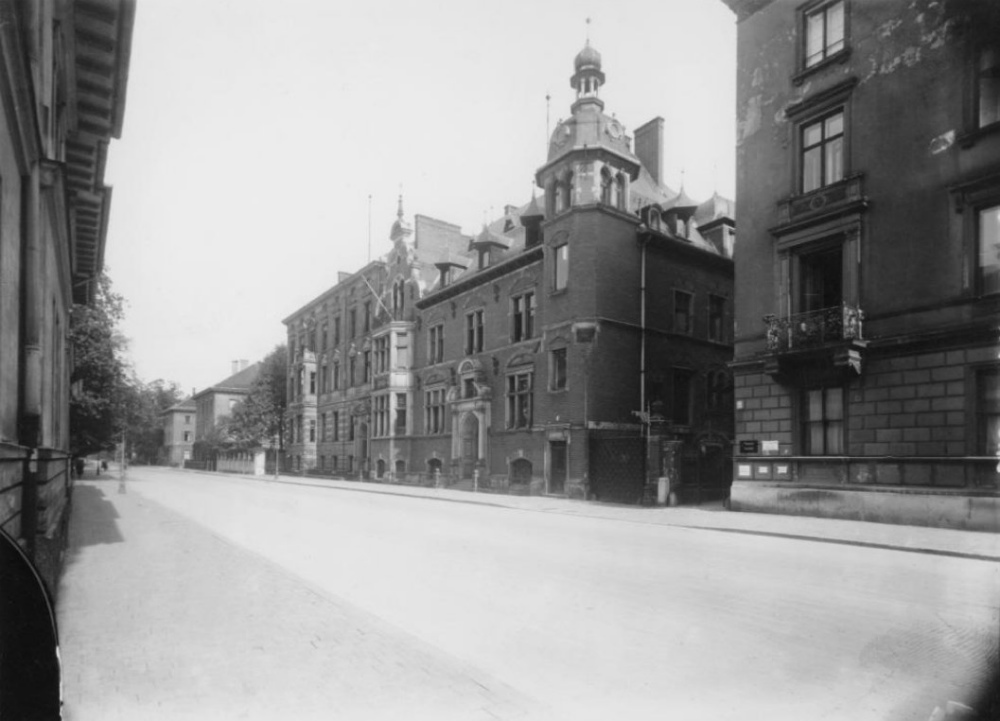
“The museum does not want to provoke,” said Schoske, after fielding questions from local newspapers over the controversial stumbling blocks in Munich. “It is just important to remember the victims of the Nazi dictatorship.”
Asked whether this museum’s activism will remain, it has already got plans to participate at the event of the initiative DENK MAL AM ORT born in Berlin (In English, Think on the Spot) in May next year. During one weekend, engaged citizens open their homes to the public to remember former neighbours who were forced to leave from these very same homes by the Nazis. At present the DENK MAL AM ORT team, with the help of a volunteer in the US, is tracking the wanderings of descendants of the Dobriner Family, presumably in New York, with the hope to find them and extend an invitation to travel to Germany for the event. “The museum would embrace them with open arms and open doors,” reaffirmed Bicker.
They would have the opportunity to share with the public the memories of their family members standing there, where they once lived and be asked by visitors the important questions that move us all forward as aware global citizens. Museums’ activism, or rather museums’ actions to be more engaged in their cities like SMAEK, send a signal of what a society is and what it aspires to be. As the SMAEK puts it, it has been part of our principles not to report about an exotic, distant, long-forgotten culture, but rather put ancient Egypt in the middle of our present.
